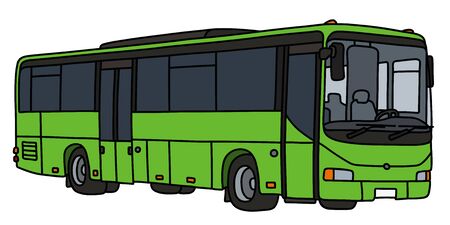Introduction to Feng Shui in the American Context
Feng Shui, an ancient Chinese practice focused on harmonizing people with their environment, has become increasingly popular across the United States. While its roots are deeply embedded in Eastern philosophy, Feng Shui’s adoption in major U.S. cities reflects a unique blend of tradition and modern Western values. This section will explore how the basics of Feng Shui are understood and adapted within American culture, setting the stage for real-world examples from cities like New York, Los Angeles, and San Francisco.
What is Feng Shui?
At its core, Feng Shui aims to optimize the flow of energy—known as “chi”—within a space. It involves thoughtful arrangement of furniture, use of colors, shapes, and natural elements to create environments that promote health, prosperity, and wellbeing. The five key elements in Feng Shui are wood, fire, earth, metal, and water.
| Feng Shui Element | Symbolizes | Common Use in U.S. Design |
|---|---|---|
| Wood | Growth & Vitality | Potted plants, wooden floors |
| Fire | Passion & Energy | Candles, fireplaces |
| Earth | Stability & Nourishment | Ceramics, stone countertops |
| Metal | Clarity & Precision | Metal decor, stainless steel appliances |
| Water | Flow & Abundance | Aquariums, fountains |
The American Interpretation of Feng Shui
In the U.S., Feng Shui principles have been reimagined to fit local tastes and lifestyles. Designers and homeowners often focus on creating open floor plans with plenty of natural light—a nod to both contemporary design trends and traditional Feng Shui ideals. Rather than strict adherence to every rule, Americans tend to select aspects that align with their personal beliefs or aesthetic preferences.
Main Ways Americans Adapt Feng Shui:
- Merging Styles: Blending Asian motifs with modern or traditional American decor.
- Simplifying Rules: Adopting only core concepts like decluttering or maximizing natural light.
- Sustainability Focus: Integrating eco-friendly materials that also fulfill Feng Shui requirements.
- Cultural Sensitivity: Using symbolic objects (like lucky bamboo) in a way that feels authentic but not out-of-place.
The Role of Major Cities in Shaping Feng Shui Trends
Cities such as New York City, Los Angeles, and San Francisco have become centers for the integration of Feng Shui in architecture and interior design. The diverse populations in these areas foster openness to multicultural practices. Local businesses—from real estate agencies to coffee shops—often consult Feng Shui experts to enhance success and attract customers. Residential buildings may advertise “good chi” layouts as a selling point.
Feng Shui in Residential Architecture
Embracing Feng Shui in American Home Design
Across major U.S. cities like Los Angeles and San Francisco, homeowners and architects are increasingly adopting Feng Shui principles to create harmonious living spaces. This ancient Chinese philosophy is being blended with modern American lifestyles, resulting in homes that aim for both comfort and positive energy flow.
How Homeowners Apply Feng Shui
Many residents believe that arranging their homes according to Feng Shui not only enhances aesthetics but also brings balance, good luck, and well-being. In cities with diverse cultures and a strong focus on wellness, such as San Francisco, it’s common to find houses where the main entrance is clear of obstacles, mirrors are strategically placed to reflect light, and colors are chosen for their symbolic meanings.
Key Feng Shui Practices in Residential Spaces
| Feng Shui Principle | Application in U.S. Homes | Benefits |
|---|---|---|
| Main Entrance Clarity | Uncluttered entryways with welcoming décor | Improved energy flow; positive first impression |
| Bedroom Orientation | Beds placed away from doors and under solid walls | Better rest and sense of security |
| Color Selection | Use of calming blues/greens or energizing reds/yellows based on room function | Mood enhancement; emotional balance |
| Natural Light & Plants | Maximizing windows; adding indoor greenery | Boosts vitality; reduces stress |
| Mirrors Placement | Avoiding mirrors facing beds or front doors; using them to reflect natural light into rooms | Avoids energy loss; increases brightness and space perception |
Architects Approach to Feng Shui Design
Architects in Los Angeles often consult with Feng Shui experts when designing new residential projects. Open floor plans are popular, allowing energy (or “chi”) to move freely throughout the house. Special attention is paid to the placement of staircases, kitchens, and bathrooms—areas believed to impact financial and family harmony.
Popular Features Inspired by Feng Shui:
- Circular driveways: Believed to encourage positive energy circulation around the home.
- Smooth pathways: Winding garden paths rather than straight lines soften the environment and slow down energy movement.
- Corners softened with plants or furniture: Avoiding “sharp” angles that can disrupt harmony.
- Bountiful backyards: Open outdoor spaces at the back of the home support prosperity, according to tradition.
Cultural Adaptation in the U.S.
The adoption of Feng Shui varies widely by neighborhood. In areas with larger Asian-American populations, such as San Francisco’s Sunset District or certain communities in Orange County, you’ll find more homes built or renovated with these ideas in mind. However, even mainstream real estate agents highlight “good Feng Shui” as a selling point for buyers interested in mindful living.

3. Corporate and Commercial Space Design
Feng Shui in the Modern American Workplace
Across major U.S. cities like New York City and Chicago, more businesses are turning to Feng Shui to create office environments that support productivity, collaboration, and employee wellbeing. While some may picture Feng Shui as a purely Eastern tradition, many American companies now blend these principles with their own local culture and design trends.
Case Studies: Real-World Applications in NYC and Chicago
| Business | Location | Feng Shui Strategies Used | Benefits Observed |
|---|---|---|---|
| Tech Startup HQ | New York City, NY | – Open layouts for better energy flow – Plants near desks – Natural light optimization – Strategic desk placement for leadership roles |
– Increased team collaboration – Higher employee morale – Lower stress reports |
| Law Firm Office | Chicago, IL | – Water features in lobby – Calming color palettes – Clutter-free communal areas – Private offices facing entryways |
– Enhanced client impressions – Improved focus among staff – Greater sense of calm at work |
| Marketing Agency Loft | New York City, NY | – Use of mirrors to expand space – Balanced lighting (mix of natural and artificial) – Artwork with positive imagery – Separate spaces for brainstorming vs. quiet work |
– Boosted creativity – Reduced distractions – Better teamwork in creative sessions |
| Corporate Headquarters | Chicago, IL | – Central gathering areas (good “Chi” flow) – Ergonomic furniture aligned with energy pathways – Green plants at entrances – Personalized workstations within guidelines |
– Lower absenteeism – Employees report feeling energized – More effective meetings reported by HR |
Popular Feng Shui Elements Adopted by U.S. Companies:
- Natural Light: Maximizing daylight to uplift mood and concentration.
- Plants: Bringing greenery indoors to purify air and promote relaxation.
- Desk Arrangement: Positioning workspaces so employees can see the entrance, fostering a sense of security and control.
- Decluttered Spaces: Keeping common areas tidy to reduce stress and mental fatigue.
- Water Features: Installing fountains or aquariums in lobbies to symbolize abundance and attract positive energy.
- Sensible Color Schemes: Using colors that match the company’s goals—like blues for calm or reds for motivation.
A Localized Approach to Feng Shui in America
The way companies in cities like New York City and Chicago use Feng Shui shows how this ancient art can be adapted to modern workplaces. By combining traditional principles with American workplace culture—think open floor plans, collaborative spaces, and emphasis on employee wellness—these businesses create offices where people feel motivated, comfortable, and productive.
4. Urban Planning and Public Spaces
How Feng Shui Shapes City Life in Seattle and Houston
Across the United States, city planners are starting to look at Feng Shui as a way to create more harmonious and inviting public spaces. Major cities like Seattle and Houston have incorporated Feng Shui principles into their urban design projects, especially in parks, city squares, and public architecture. These efforts show how ancient wisdom can blend with modern American city life.
Examples of Feng Shui in Public Spaces
| City | Project | Feng Shui Features | Benefits for the Community |
|---|---|---|---|
| Seattle | International District Gateway Park | Curved pathways, water features, balance of greenery and open space | Encourages positive energy flow, creates a welcoming atmosphere for visitors |
| Houston | Dennison Park Renovation | Strategic placement of benches, use of natural materials, incorporation of “bagua” zones | Promotes relaxation, supports community gatherings, enhances sense of safety |
| Seattle | Chinatown-International District Street Design | Main entrance facing south, red accents for good luck, gentle lighting to avoid harsh shadows | Makes the area feel vibrant and safe at night, honors cultural heritage, attracts local businesses |
| Houston | Buffalo Bayou Park Pavilion | Pavilion positioned to maximize sunlight, use of flowing shapes and reflective surfaces | Boosts enjoyment of natural surroundings, helps people feel energized during events |
The Impact on Urban Design Choices
Planners in these cities often consult Feng Shui experts when creating or renovating public spaces. They focus on the “flow” of people—how residents move through a park or square—and aim to avoid blocked pathways or sharp corners that could interrupt the movement of energy (known as qi). Water features like fountains are placed where they can bring vitality without causing stagnation. Seating is arranged to encourage social interaction while maintaining privacy.
What Makes Feng Shui Work in American Cities?
The success of these projects often comes from blending traditional Feng Shui ideas with local needs. For example, using native plants alongside symbolic rocks or sculptures lets parks feel both culturally relevant and environmentally friendly. The result is public spaces that feel balanced, comfortable, and uniquely American while still honoring Asian heritage.
5. Challenges and Cultural Integration
Adapting Feng Shui to the American Context
When it comes to applying Feng Shui principles in major U.S. cities, there are unique challenges and adaptations involved. American architecture, lifestyle, and building regulations often differ greatly from traditional Chinese settings where Feng Shui originated. As a result, designers, homeowners, and businesses need to find creative ways to blend these ancient practices with modern American life.
Common Challenges in Merging Feng Shui and U.S. Practices
| Challenge | Description | How Its Addressed |
|---|---|---|
| Building Codes and Regulations | Strict zoning laws and safety codes can limit design flexibility. | Feng Shui consultants work closely with architects to find compliant solutions that still honor energy flow principles. |
| Architectural Styles | American homes and offices often have layouts unlike those found in traditional Chinese buildings. | Adaptations may include rearranging furniture or using decorative elements to enhance energy flow without altering structure. |
| Cultural Preferences | Some Feng Shui concepts may feel unfamiliar or unnecessary to American clients. | Consultants explain the benefits in everyday language and focus on practical improvements like better lighting or clutter reduction. |
| Modern Lifestyles | Busy schedules and tech-heavy environments can make traditional Feng Shui adjustments harder to implement. | Simplified tips—like placing plants for positive energy or using mirrors for light—make integration easier for busy Americans. |
Success Stories: Making It Work in Major Cities
Despite these challenges, many U.S. cities have seen success by customizing Feng Shui for local needs. For example, office towers in New York City have incorporated water features at entrances to invite prosperity according to both Feng Shui beliefs and modern design trends. In Los Angeles, real estate agents often highlight properties with good natural light and open layouts as “Feng Shui-friendly,” appealing to buyers who value wellness-oriented spaces.
Key Adaptations in Major Cities:
- Flexible Designs: Many projects use modular furniture or movable partitions to create balanced spaces within fixed building structures.
- Cultural Fusion: Designers blend traditional Chinese elements (such as bamboo or round shapes) with contemporary American décor for a harmonious look.
- User Education: Workshops and public talks help residents understand how simple changes based on Feng Shui can improve comfort and well-being.
The Ongoing Journey of Integration
The process of merging Feng Shui with American culture is ongoing, requiring open-mindedness from both practitioners and clients. By focusing on the shared goals of comfort, harmony, and well-being, cities across the U.S. continue to find new ways to benefit from these timeless principles while respecting local traditions and regulations.


